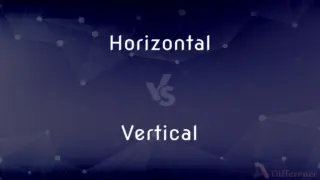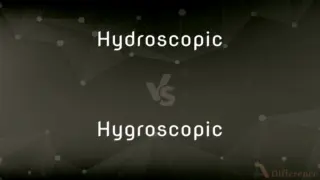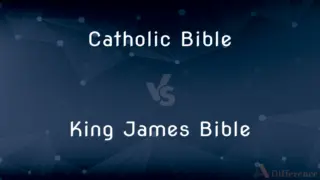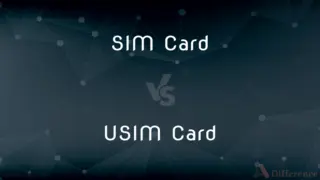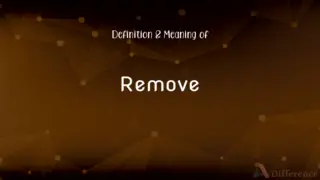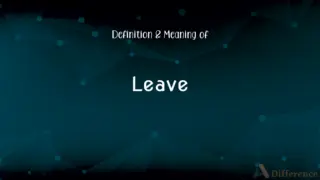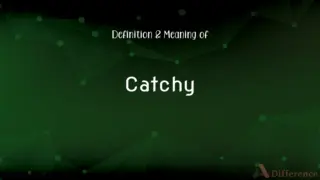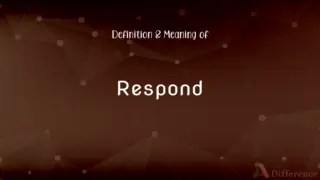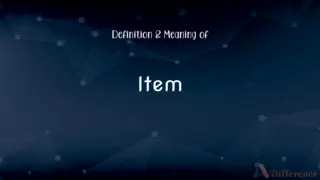Blizzard vs. Winter Storm — What's the Difference?
Edited by Tayyaba Rehman — By Fiza Rafique — Published on November 6, 2023
A blizzard is a severe snowstorm with strong winds and low visibility; a winter storm is any storm occurring in winter, producing snow, sleet, or freezing rain.

Difference Between Blizzard and Winter Storm
Table of Contents
ADVERTISEMENT
Key Differences
A blizzard and a winter storm are terms that both relate to wintry weather conditions, but they are not synonymous. A blizzard denotes a specific kind of severe snowstorm characterized by powerful winds, while a winter storm is a broader term that can encompass various forms of precipitation during the colder months.
Blizzards stand out for their ferocity and potential danger. They not only bring heavy snow but are also accompanied by strong, gusty winds that create significant drifts and greatly reduce visibility, often to near-zero conditions. In contrast, winter storms might not always be as intense as blizzards but can still bring an assortment of weather conditions, like snow, sleet, or freezing rain.
The criteria for a storm to be classified as a blizzard typically include sustained or frequent gusts of 35 mph or more and visibility reduced to less than a quarter-mile due to blowing snow, lasting for at least three hours. Winter storms, meanwhile, lack such specific criteria and are more generally defined by the occurrence of winter precipitation.
Safety concerns arise during both blizzards and winter storms. While blizzards are notably perilous because of the combination of heavy snow and wind, winter storms can also pose threats, especially if they result in ice accumulation, which can lead to power outages, tree damage, and hazardous road conditions.
To sum up, while all blizzards are winter storms, not all winter storms are blizzards. The severity, duration, and specific conditions of the weather event are what distinguish them.
ADVERTISEMENT
Comparison Chart
Definition
Severe snowstorm with strong winds and low visibility.
Broad term for storms in winter producing various forms of precipitation.
Wind Requirement
Typically sustained/frequent gusts of 35 mph or more.
No specific wind requirement.
Visibility
Reduced to less than a quarter-mile due to blowing snow.
Can vary; not necessarily reduced to quarter-mile.
Duration
Typically lasts for at least three hours.
Duration can vary widely.
Types of Precipitation
Mainly snow, intensified by wind.
Snow, sleet, freezing rain, or a combination.
Compare with Definitions
Blizzard
It significantly reduces visibility due to blowing snow.
Driving in the blizzard was perilous due to near-zero visibility.
Winter Storm
It can encompass snow, sleet, or freezing rain.
The winter storm began as snow but turned into sleet by the evening.
Blizzard
Blizzards can lead to dangerous drifts and conditions.
The blizzard left snow drifts that were several feet high around our house.
Winter Storm
The severity and duration of a winter storm can vary widely.
The winter storm lasted two days, blanketing the town in snow.
Blizzard
A blizzard's conditions typically last for three hours or more.
The blizzard raged on for the entire day, making travel impossible.
Winter Storm
A winter storm is a weather event producing wintry precipitation.
Schools closed due to the upcoming winter storm.
Blizzard
It usually has sustained winds of 35 mph or more.
The blizzard's fierce winds made it impossible to venture outside.
Winter Storm
It represents any storm that occurs during the colder months.
We're preparing for another winter storm forecasted for this weekend.
Blizzard
A blizzard is a severe winter storm with heavy snow and powerful winds.
We stayed indoors during the blizzard to remain safe.
Winter Storm
Winter storms can lead to various hazards, including icy roads.
Many accidents occurred due to the icy conditions after the winter storm.
Blizzard
A violent snowstorm with winds blowing at a minimum speed of 35 miles (56 kilometers) per hour and visibility of less than one-quarter mile (400 meters) for three hours.
Blizzard
A very heavy snowstorm with high winds.
Blizzard
A torrent; a superabundance
A blizzard of phone calls.
Blizzard
A large snowstorm accompanied by strong winds and greatly reduced visibility caused by blowing snow.
Blizzard
(figuratively) A large amount of paperwork.
Blizzard
(figuratively) A large number of similar things.
A blizzard of political ads
Blizzard
To fall in windy conditions.
Blizzard
A gale of piercingly cold wind, usually accompanied with fine and blinding snow; a furious blast.
Blizzard
A storm with widespread snowfall accompanied by strong winds
Blizzard
A series of unexpected and unpleasant occurrences;
A rash of bank robberies
A blizzard of lawsuits
Common Curiosities
Can a winter storm occur without snow?
Yes, a winter storm can produce sleet, freezing rain, or a mix without just snow.
How dangerous is a blizzard compared to a regular winter storm?
Both can be dangerous, but blizzards are especially perilous due to their intensity, reduced visibility, and wind-driven snow.
Can a winter storm turn into a blizzard?
Yes, if a winter storm's conditions intensify to meet the criteria for a blizzard, it can be classified as such.
What distinguishes a blizzard from other winter storms?
A blizzard is characterized by heavy snow, strong winds, and significantly reduced visibility for at least three hours.
Is it safe to drive during a blizzard?
No, driving during a blizzard is hazardous due to low visibility and treacherous road conditions.
What causes a winter storm?
Winter storms are caused by cold air mixing with moisture, leading to wintry precipitation.
How long does a typical winter storm last?
The duration of a winter storm can vary widely, from a few hours to several days.
Are blizzards common in all snowy regions?
No, blizzards are more common in certain regions and are influenced by local geography and weather patterns.
How can one prepare for a winter storm?
Stock up on essentials, protect pipes, stay updated with weather forecasts, and ensure you have emergency supplies.
What's the primary hazard of a winter storm if not snow?
Apart from snow, icy conditions from sleet and freezing rain can be major hazards of a winter storm.
What impact can blizzards have on infrastructure?
Blizzards can cause power outages, disrupt transportation, and lead to property damage.
Are blizzards and winter storms predictable?
Yes, meteorologists use advanced tools and models to predict the onset and severity of blizzards and winter storms.
What precautions should be taken during a blizzard?
Stay indoors, avoid travel, stock up on essentials, and keep warm.
Do blizzards occur only in North America?
No, blizzards can occur in many parts of the world, wherever the conditions are right.
How is the severity of a winter storm measured?
The severity can be gauged by precipitation type, accumulation, temperature, and associated impacts.
Share Your Discovery

Previous Comparison
iPod vs. MP3 Player
Next Comparison
Taurine vs. L TaurineAuthor Spotlight
Written by
Fiza RafiqueFiza Rafique is a skilled content writer at AskDifference.com, where she meticulously refines and enhances written pieces. Drawing from her vast editorial expertise, Fiza ensures clarity, accuracy, and precision in every article. Passionate about language, she continually seeks to elevate the quality of content for readers worldwide.
Edited by
Tayyaba RehmanTayyaba Rehman is a distinguished writer, currently serving as a primary contributor to askdifference.com. As a researcher in semantics and etymology, Tayyaba's passion for the complexity of languages and their distinctions has found a perfect home on the platform. Tayyaba delves into the intricacies of language, distinguishing between commonly confused words and phrases, thereby providing clarity for readers worldwide.



